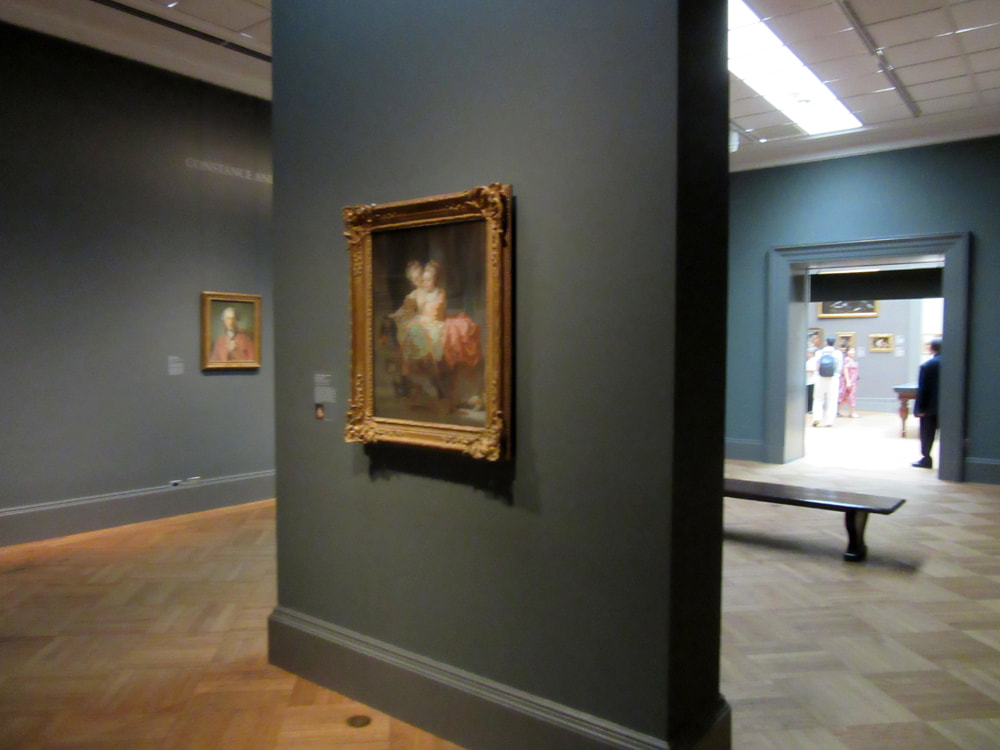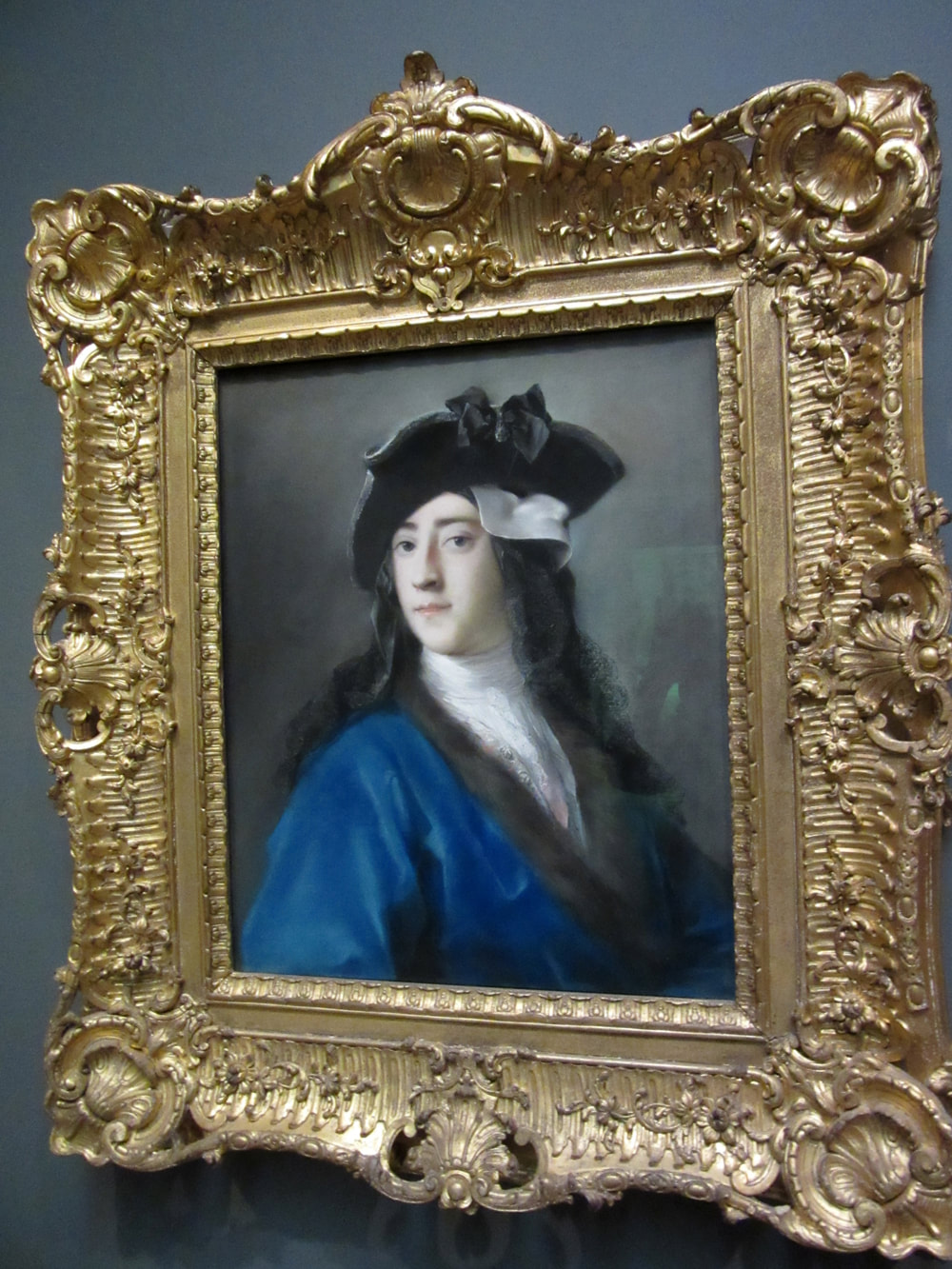|
“Eighteenth Century Pastel Portraits” at the Metropolitan Museum of Art is a small exhibit of European pastels. It includes, French, Italian, German and British works from the museum's collection.
An exhibition of pastels is not all that common. Works done in pastel are light sensitive. Prolonged exposure to light causes some pigments to fade. In addition, most pastels are done on paper and paper can fade or deteriorate with prolonged exposure to light. As a result, museums generally exhibit pastels in rooms with dim light and even then only for brief periods. The difficulties associated with such arrangements prevent museums from mounting pastel exhibitions very often. Essentially, a pastel is made up of pigment and a binder such as gum. The combination is then molded into a rounded or squared stick. The artist can then use the sticks in the same manner as a pencil. In other words, he or she can create a work without using brushes or mediums such as oils. Historically, pastels were often referred to as crayons. However, pastels differ from modern crayons in that the binder in crayons is usually wax. Pastels are more powdery than modern crayons. While crayons stick to paper better than pastels, pastels are easier to blend and they cover the ground more easily than crayons. Another somewhat confusing term that you often see is “pastel painting.” A pastel painting merely means that the pastels cover the entire ground. A pastel that leaves part of the paper exposed is a “pastel sketch.” It is believed that pastels were invented in the 15th century. There is evidence that Leonardo Da Vinci knew of pastels from a French artist in 1499. In any event, pastel portraits became very popular in Europe during the 18th century. People were attracted by the luminosity of the pastels and the speed and ease with which they could be used. The exhibit presents works by several of the leading pastelists of that era. Rosalba Carriera specalized in pastel portraits and became one of the most successful women artists of all time. She began by painting miniatures but by 1703, she had mastered pastels. Not long after, merchants, nobles and visitors to Venice were queuing for her pastel portraits. She went to Paris and painted the king and his nobles. She went to Vienna and the Holy Roman Emperor became her patron. Carriera is represented by a portrait of a young Irishman dressed in a cloak and tricorne hat. The mask that he has shifted away from his face shows that he is in Venice for the Carnival. Proud and dashing, it is the image of a young noble living life to the full in that romantic city. John Russell was the leading English pastel portraitist. In fact, he was appointed pastel artists to King George III. He also wrote the still inflential book Elements of Painting with Crayons. Russell is represented by three works. One is a charming portrait of his daughter with a baby. The other two are commission portraits of a merchant and his wife. She looks like the dominate one of the couple while he seems to have the look of someone who knows when he is well off. The signs by the paintings tell us that she was an heiress and that when the couple married, he took her family name. Adelaide Labille-Guiard was a member of the French royal academy of painting and sculpture. She is represented by a portrait of Elisabeth de France, the younger sister of King Louis XVI. A virtuous and religious person, there have been calls for pleasant looking person's beatification. However, there is always an element of tragedy in pictures of the members of this doomed family. The images in this exhibit are in sharp contrast to the familiar pastels of artists such as Degas. Rather than strong expressive lines, these works are soft and smooth with no trace of the artists' strokes. Still, they subtlety convey the personalities of the sitters. Comments are closed.
|
AuthorRich Wagner is a writer, photographer and artist. Archives
November 2018
Categories
All
|


 RSS Feed
RSS Feed